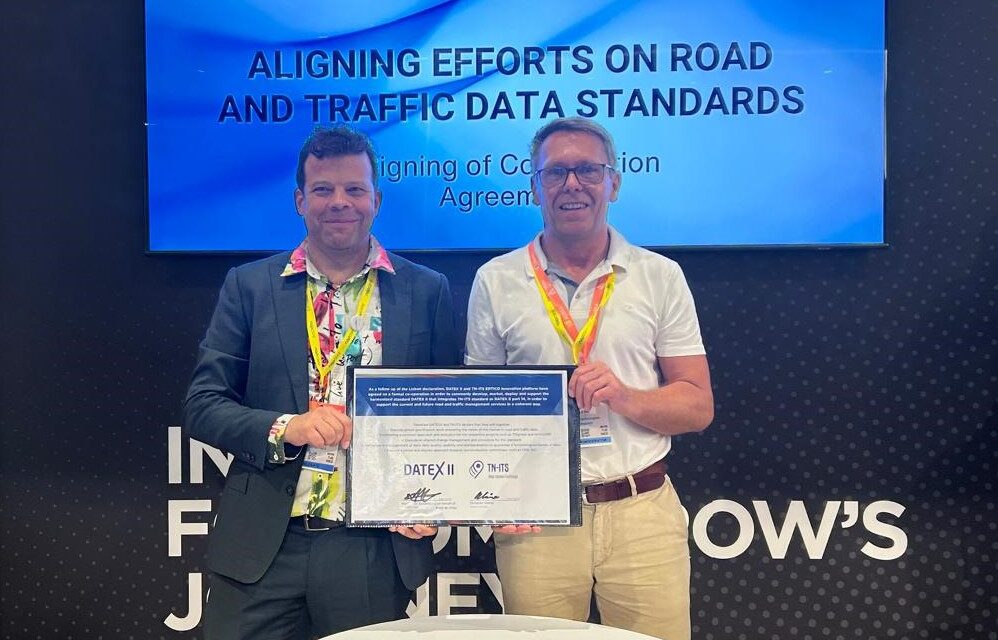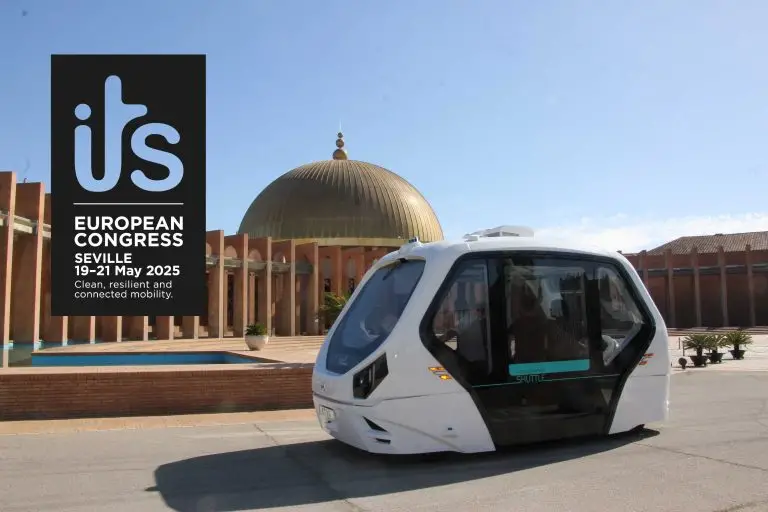• The 16th ITS European Congress opens in Seville, 19-21 May 2025 under the theme: Clean, Resilient, and Connected Mobility.
• The Congress will unite close to 3,500 attendees, including municipal and regional authorities, policymakers, research institutions, and private sector innovators.
• Connected and automated mobility will have significant visibility and impact during the various sessions, particularly through real-time data exchange and V2X (vehicle-to-everything) solutions.
• These innovative technologies impacting daily mobility will be the discussion points throughout the event, including the Conference programme and showcased in the exhibition, live demonstrations and technical visits.
Seville, Spain. 19 May 2025. The 16th European ITS Congress officially opened today at the FIBES Conference Centre in Seville, bringing together leaders from European institutions, public authorities, and the broader community of stakeholders in transport and mobility. Under the theme ‘Clean, Resilient, and Connected Mobility‘, the Congress began with a strong call to accelerate innovation and collaboration in Intelligent Transportation Systems (ITS) across Europe.
On this first day, the opening press conference brought together high-level representatives who offered their perspectives on the strategic importance of this Congress in the global mobility dialogue and set the tone for the three-day event.
Dr Angelos Amditis, Chairman of ERTICO – ITS Europe, welcomed participants to this significant sector event and highlighted the unique role of the event in shaping Europe’s transport and mobility agenda. He also expressed gratitude to all parties contributing to the event’s organisation, such as the City of Seville, ITS Spain, as well as the Ministry of Transport and Sustainable Mobility of Spain, the Ministry of the Interior, and the Directorate General of Traffic (DGT). Closing his speech, Angelos referenced the outcomes of the High-Level Intelligent Mobility Summit, where 16 cities were represented, emphasising how collaborative innovation continues to be a driving force across all sectors, considering topics like inclusive mobility, electrification, among others.
“Inclusivity in mobility is an extremely important aspect highlighted at this year’s ITS European Congress. Technology can serve to democratise and equalise rights, such as mobility accessibility in society,” noted Dr Amditis.
The Mobility Councillor of Seville City Council, Álvaro Pimentel Siles, welcomed attendees on behalf of the host city. Seville’s commitment to urban transport innovation was the core of his address, emphasising the importance of these forums in promoting the exchange of best practices and aligning policies. He also pointed to the city’s investment in multimodal mobility and the significance of knowledge exchange between European cities.
“We aim to jointly shape the smart mobility of the future. From the very beginning, the city council has been strongly committed to this congress, and with it, we want to show the world what the city is doing in smart mobility and for the world to show us. In Seville, we’ve promoted a sustainable and accessible transport system serving citizens. Among the initiatives launched, we highlight the implementation of the low-emission zone in Isla de la Cartuja and aim for the entire Tussa public transport fleet to be zero emissions by 2027. From Seville, we promote a model of a modern, urban, and connected city with the goal of making the city the capital of sustainable mobility in Southern Europe,” stated Mr Pimentel Siles.
Moumen Hamdouch, Head of the Sustainable and Intelligent Transport Unit at the European Commission, discussed the role of EU programs and legislation in accelerating the deployment of connected, automated, and sustainable mobility solutions. He highlighted the need for stronger public-private collaboration to support the green and digital transition.
“Sustainable and smart mobility is rapidly evolving, and we are committed to accelerating this trend. The European automotive industry is, of course, at a crucial moment as it transitions to connected and automated zero-emission vehicles. The sector faces significant challenges to maintain its competitiveness, especially in strategic areas such as batteries, software, and automation. In response, the European Union is adopting various actions encompassed in the Industrial Action Plan for the European automotive sector,” stated Mr Hamdouch.
Representing the industry’s perspective, Francisco Sánchez, Director of Electronics and ITS at CTAG, emphasised the high value of this event for CTAG. Sánchez highlighted the key role of applied research and development in promoting safer, automated, and user-centered transport solutions, reinforcing their commitment to innovation in smart mobility.
“Among the projects we’ll showcase during the congress, we highlight the autonomous shuttle service connecting the Torre del Oro and the Seville Aquarium, with extensions to the cruise terminal on specific days. With level 4 autonomy and V2X-enabled connectivity, the service aims to highlight the future of urban transport systems,” noted Francisco Sánchez. “Adding to these are others like the Autonomous Valet Parking with cooperative infrastructure powered by DGT or the C-ITS Corridor, showcasing the future of intelligent transport, where vehicles, infrastructure, and technology work seamlessly together.”
Offering a regional perspective, Ana Luz Jiménez Ortega, Provincial Traffic Chief in Seville and Regional Coordinator of the Directorate General of Traffic (DGT) in Andalusia, described the region’s commitment to deploying intelligent traffic systems and provided an overview of ITS usage and its evolution in Andalusia. Jiménez presented the most relevant innovations that congress attendees can expect to experience during the event with DGT’s contribution.
“We started implementing ITS in Spain in the 1980s to enhance street safety through traffic supervision and control and to address increased infrastructure demands through the traffic management system. Today, this collaborative evolution has led to a cooperative and connected ecosystem, DGT 3.0, a connectivity platform that constitutes the national access point required by the ITS Directive, incorporating real data from various safety and traffic management systems.”
Closing the opening session, Joost Vantomme, CEO of ERTICO – ITS Europe, offered a forward-looking perspective on the congress’s most relevant activities. He reflected on key topics: CCAM (Connectivity, Cooperation, and Automation in Mobility), emerging technologies, mobility resilience, among others. He highlighted the key aspects of the comprehensive program, including three high-level programme with three plenaries and the official opening and closing ceremonies, technical sessions and presentations, live demonstrations, technical visits, and the new ITS Arena in the exhibition. Framing the Congress as a unique platform for impact, Vantomme reaffirmed ERTICO’s commitment to co-create smart mobility solutions with its partners and all stakeholders throughout the week.
“The ITS European Congress plays a crucial role in shaping the future of smart mobility. It not only reflects our mission as organiser to provide a cross-sectoral platform for public and private actors to exchange knowledge and form partnerships, but it also enables the wider community to showcase cutting-edge transport and mobility solutions and innovations. By turning dialogue into action and pilot projects into policy frameworks, the Congress accelerates the implementation of ITS. Through global participation, the Congress supports collaboration that transcends borders, essential for scalable and interoperable mobility solutions,” affirms Joost Vantomme, CEO of ERTICO.
To view the complete agenda of the ITS European Congress in Seville, visit the official Congress website.




